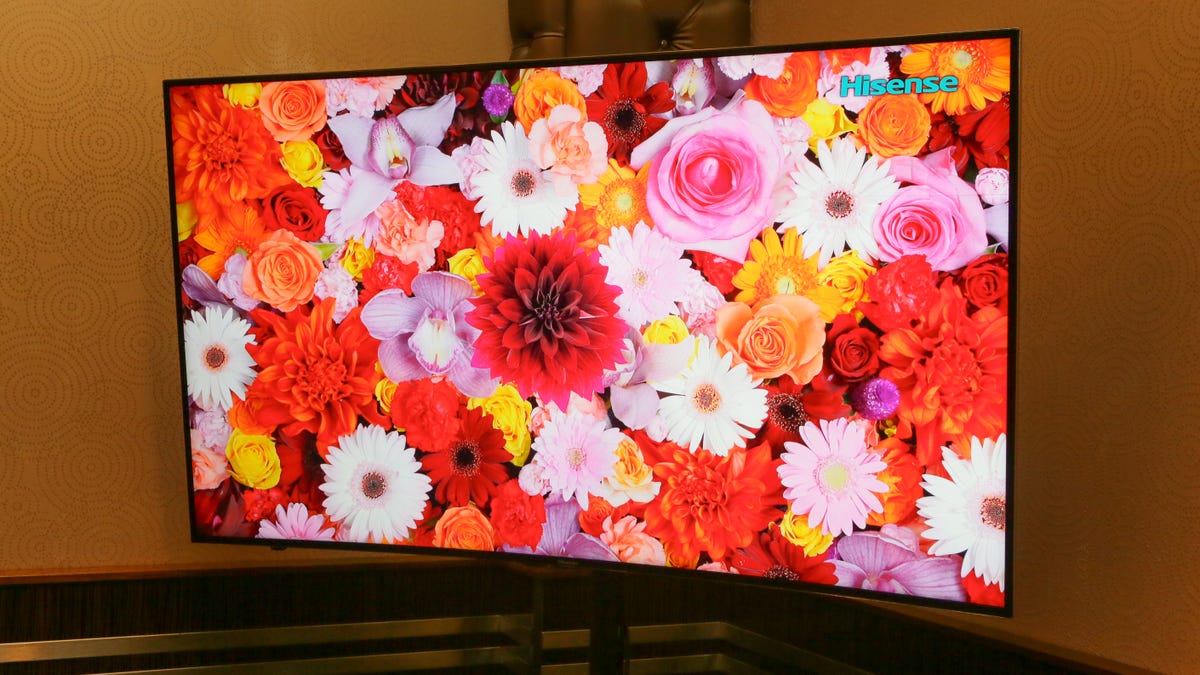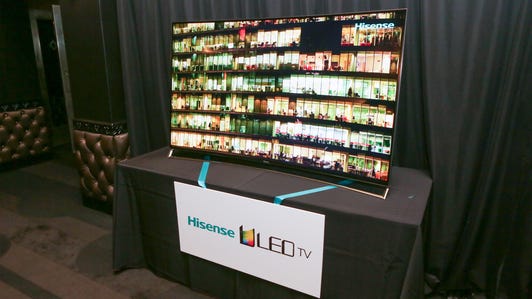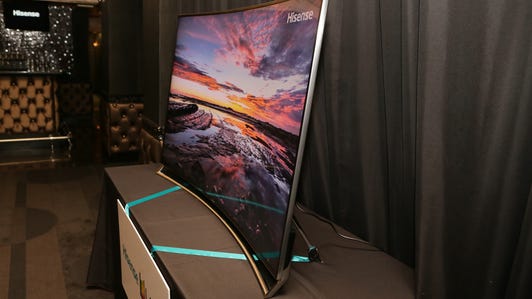
Sarah Tew/CNET
If you’ve never heard of Hisense or ULED, you’re forgiven.
Today the China-based manufacturer, which is better known here in the US for its air conditioners and other appliances, took a step toward improving the perception of its TVs at a press event in New York.
Taking aim at high-end OLED TVs from LG and SUHD TVs from Samsung, Hisense announced a pair of “ULED” TVs, the 65-inch 65H10B ($2,999) and a 55-inch model for $1,299. They’ll be available in the next few days from Amazon for pre-order, and start shipping in October.
The “U” stands for “Ultimate” according to the company, but it uses the same the LED (light emitting diode) LCD technology found on almost all TVs sold today. On paper, the H10 series hits all of the picture-quality high notes of its competitors, including 4K resolution, local dimming, wide color gamut and HDR, for significantly less money. LG’s 65-inch OLED TVs sell for $6,999 and Samsung’s best 65-inch LCD SUHD TVs sell for $4,500.
Hisense ULED TV






+8 more
The 65-inch Hisense ULED model is the star of the show, delivering a full-array local dimming backlight with 240 independent dimming zones. Local dimming, which allows the TV to independently control the light output of different areas of the screen simultaneously, is the most important image quality enhancement to LCD TVs in our experience. That’s a significantly higher number of zones than any TV of its size, and more dimming zones generally improves picture quality.
In demos at the event today the ULED TV looked good placed side-by-side with OLED and SUHD TVs, but I won’t know more about how well ULED performs until when I’m able to compare it in our lab.
Other high notes include QD (quantum dot) technology said to improve the TVs’ color to hit 100 percent of the NTSC color space and 140 percent of Rec 709. Other TV makers that employ such technology, like Samsung, claim a high percentage of DCI color(widely seen as the successor to the standard HDTV color space, which is Rec 709) as well, but Hisense did not provide that specification.
Like the best OLED and LED LCD TVs available today, the 65-inch H10 is also compatible with HDR content. HDR video, not to be confused with HDR for photography, promises better picture quality thanks to brighter, more realistic highlights and other improvements. It’s widely viewed as the next step beyond 4K, which addresses only resolution, or picture sharpness, and not contrast or color.
The 65-inch ULED TV will offer HDMI 2.0a compatbility, so it will work with forthcoming HDR sources via HDMI, like 4K Blu-ray players. In terms of streaming HDR sources, the company also told me it would be compatible with “UHD alliance open source HDR but not…Dolby vision HDR.” It’s unclear if the set will launch with compatibility for Amazon or Netflix streaming HDR sources.
The only fly in the specification ointment? The H10 series has a curved screen, while most video geeks (myself included) prefer flat screens.
Hisense is also selling a 55-inch version, with 85 dimming zones and no support for quantum dot or HDR.
Of course, the big question is whether anyone will want to pay a premium price for a TV from a relatively unknown brand that, until now, sold mostly entry-level models.
We’re looking forward to reviewing the H10 series soon, and seeing how it compares against other high-end televisions.




